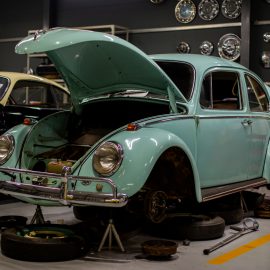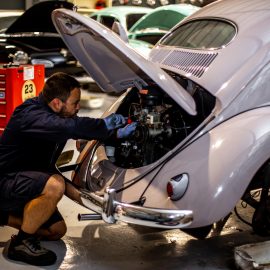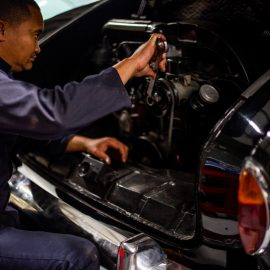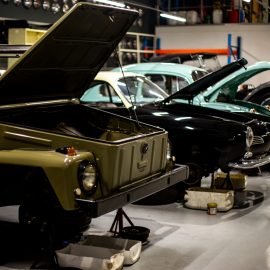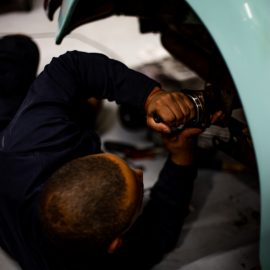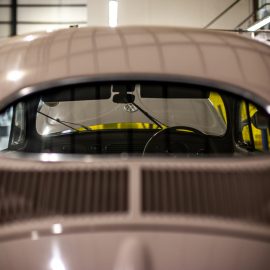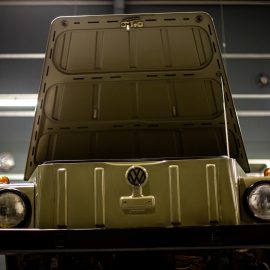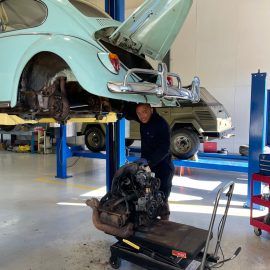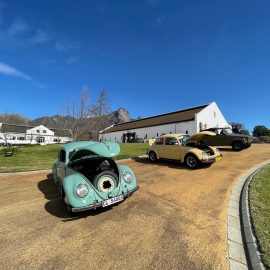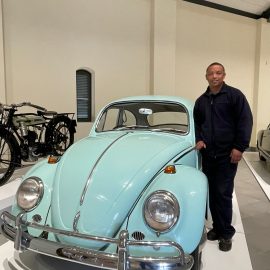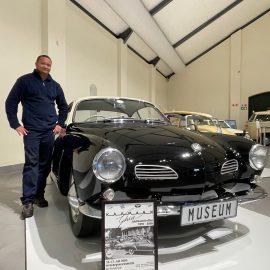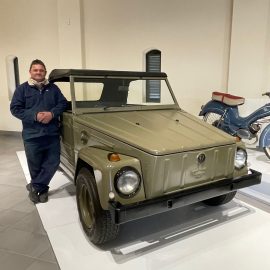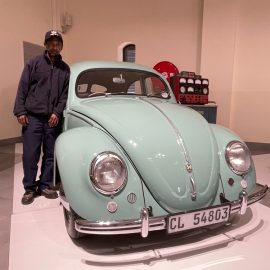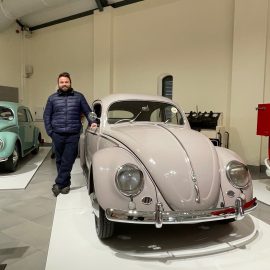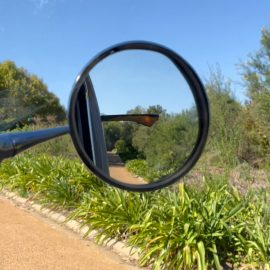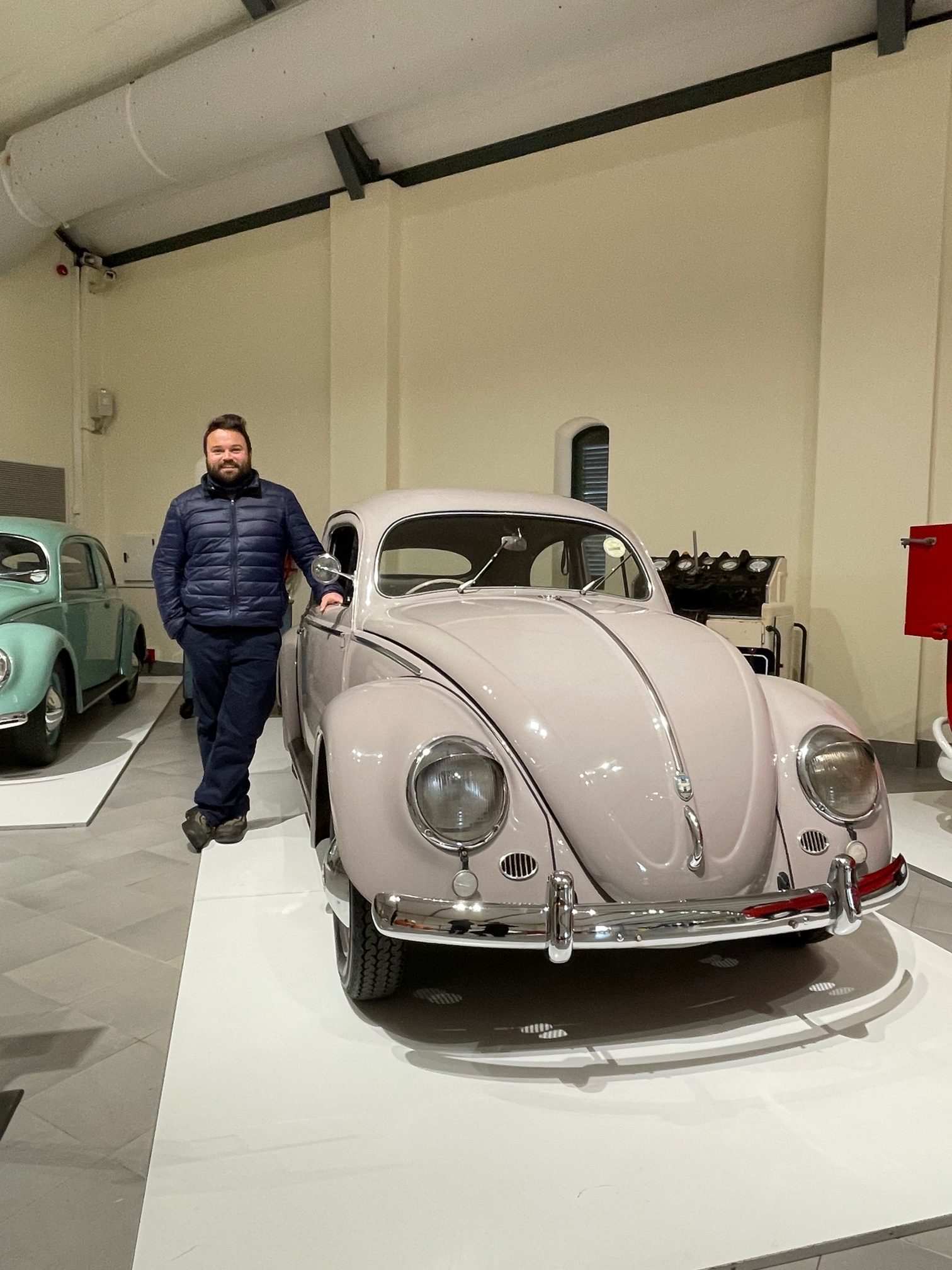
01 Sep Spanner Works: JP du Plessis
A regular feature, outlining the activities of FMM’s workshop personnel who are responsible for repairing, renovating, refurbishing and restoring the museum’s large and varied collection of vehicles. As can be surmised from other articles in this month’s newsletter, FMM was rich in VW activity, including the workshop as technician JP du Plessis reveals…
If there ever was a country that appreciates the VW brand, South Africa would be near the top, with many South Africans in some way having memories in or around The People’s Car. So when it was determined that for August the museum would participate in the anniversary celebration by showcasing a display of unique Volkswagens, each of the models that are in the Museum’s collection were given to the workshop team to prepare.
The 1952 Beetle is a running car, but had some service and trim items that needed to be attended to. Elton Botha took charge of making sure the brakes operated properly, after which he fitted new number plates and attended to the trim items.
The 1957 Beetle was not running and had an issue with brakes from years of dormancy. The fuel pump and semaphore indicators were among some missing items. JP du Plessis went about his way finding the semaphores and getting them fitted and working. Then he tackled the brakes, for which the master cylinder and wheel cylinders had to be re-sleeved, and those beyond repair were procured by workshop manager, Lorenzo Farella, along with replacement parts for the other VWs due for display. FMM Curator Wayne Harley sourced the correct fuel pump in Johannesburg, and it was only a matter of installing it and preparing the engine for its first start in years. Base timing was set, the carburettor was cleaned and fresh petrol was added to a newly coated tank. After some manipulation, the Oval Window Beetle fired up and was taken for a test drive on the estate, indicating every turn along the way. Sorry, I mean semaphored…
The 1959 Karmann Ghia was also not known to have run for some time and had some chrome trim missing. Donnie Tarentaal set about getting the base timing and carburettor settings on point. Then the brakes were attended to. After some discussion, it was determined that a simple hone of the wheel and master cylinders along with new cup washers would suffice in this case. Michael van Graan helped out with fabricating and polishing some trim to replace the missing items. A test drive ensured that the sleekest design amongst the museum’s VWs was ready for action.
The 1968 Type 182 – or ‘Thing’ – had also not run in years and was struggling with fuel delivery issues. Michael made sure the fuel tank was rust free inside and coated it with his special PPG anti-corrosion solution. He also did the other Volkswagens’ tanks whilst at it. He then removed the Thing’s carburettor and left it in the ultrasonic cleaner to work its magic. This vehicle has a dual circuit master cylinder, so with Donnie’s help Michael carefully checked both chambers’ surfaces. The necessary honing was done to get it back to tip-top condition. After test driving, it was found that the car would not idle, after which Michael found that the air filter was clogged, so he cleaned it and all was well afterward.
The 1966 Beetle is an untouched, original example. It had not run in years, and the windows had turned black from being too long in the sun. The fuel tank was corroded badly, the brake cylinders needed attention and the gearbox had an oil leak. Firstly, Wenstley Wicomb took on the task of preparing the engine for starting. He then tackled the brakes and found one wheel cylinder to be completely seized. A new one arrived with the other parts and the other existing cylinders were honed and new cup washers fitted. The gearbox leak was quite a job. At first, Wenstley thought that it was only a transaxle boot, which he replaced. The next morning, however, there was oil on the floor on the same spot. So he thought it must be the gearbox casing gasket. This meant the engine had to be removed so that the gearbox could be removed to replace the gaskets and correctly adjust the spacing. With everything open, the opportunity was taken to replace all other seals and the clutch was inspected. Once the engine and gearbox had been cleaned up nicely, the drivetrain was reinstalled. Then it was time to test the car, and with the engine already prepared earlier, it was a simple task to get it running. After all the hard work, Wenstley’s smile after the test drive was a picture!
With all the cars ready and prepared, the month of August saw them proudly displayed in Hall B. So now it’s back to working spanners on other cars in the collection…




